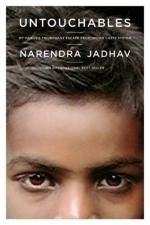
|
| Name: _________________________ | Period: ___________________ |
This quiz consists of 5 multiple choice and 5 short answer questions through Section 6: "Part Six: Backlash".
Multiple Choice Questions
1. In the opening anecdote of the book, what escapes from the melting permafrost?
(a) Anthrax.
(b) Mercury.
(c) Nuclear waste.
(d) SARS-CoV-2.
2. In "A Long-Running Play and the Emergence of Caste in America," what does Wilkerson say Americans want to dismiss as a "sad, dark chapter" of American history (43)?
(a) The Jim Crow era.
(b) The Trump presidency.
(c) Slavery.
(d) The Colonial treatment of Blacks.
3. In "Chapter Eleven: Dominant Group Status Threat and the Precarity of the Highest Rung," which group of Americans does Wilkerson say is facing declining life expectancy?
(a) Middle-aged, less-educated Blacks.
(b) Young, educated Blacks.
(c) Young, educated whites.
(d) Middle-aged, less-educated whites.
4. In "Chapter Twenty: The Inevitable Narcissism of Caste," to which narcissistic family role does Wilkerson compare indigenous peoples?
(a) The "golden child."
(b) The "peacemaker."
(c) The "lost child."
(d) The "scapegoat."
5. In "Pillar Number Five: Occupational Hierarchy: The Jatis and the Mudsill," how does Wilkerson say the state of South Carolina tried to keep Blacks out of all jobs other than domestic service and farming?
(a) Through terror and social pressure.
(b) By making it illegal for Blacks to work outside of farming and domestic service.
(c) By refusing them access to schooling.
(d) By assessing them an exorbitant fee for a license to do other work.
Short Answer Questions
1. In "Chapter Fourteen: The Intrusion of Caste in Everyday Life," who follows and questions Wilkerson when she is in an airport?
2. To what part of history does Wilkerson explicitly link the Electoral College?
3. In "Chapter Eleven: Dominant Group Status Threat and the Precarity of the Highest Rung," Wilkerson discusses biases that occur without thought. What is this kind of bias called?
4. In "Pillar Number Five: Occupational Hierarchy: The Jatis and the Mudsill," what does Wilkerson say Blacks found when they migrated North during the Great Migration?
5. In "Chapter Fifteen: The Urgent Necessity of a Bottom Rung," what does Wilkerson say is the "greatest threat to a caste system" (224)?
|
This section contains 401 words (approx. 2 pages at 300 words per page) |

|




